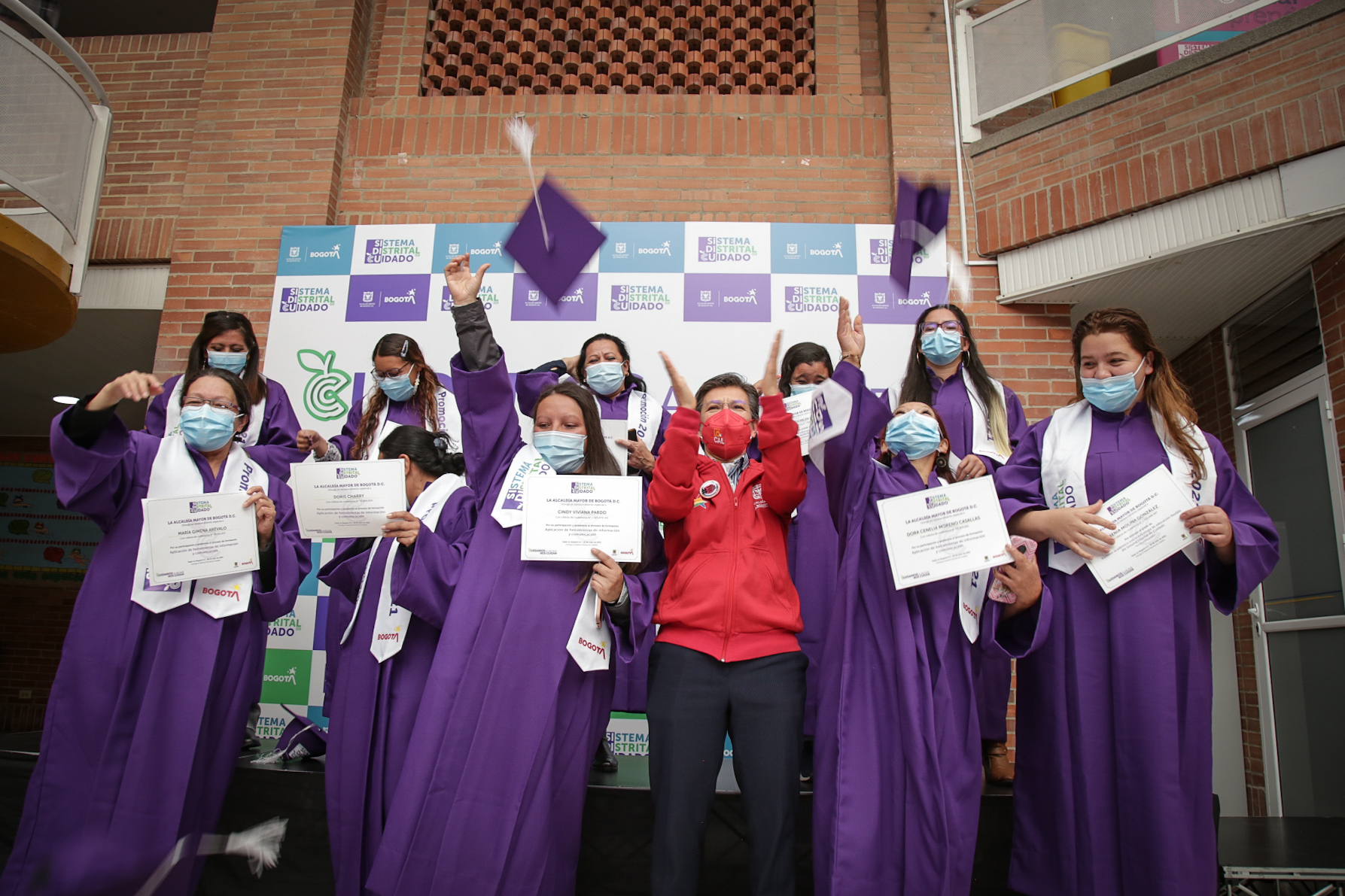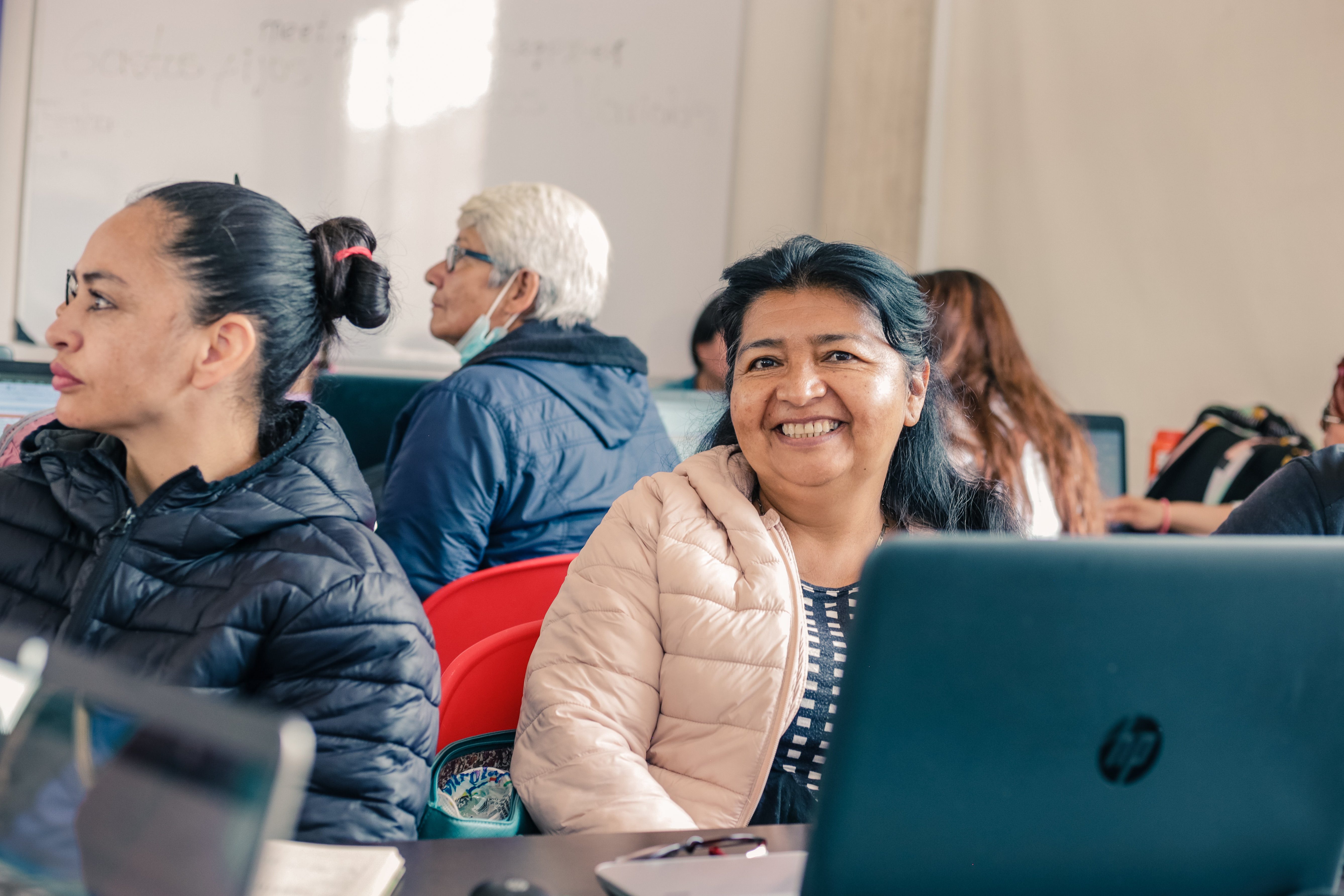 Bogotá Cares - © City of Bogotá
Bogotá Cares - © City of Bogotá Bogotá Cares - © City of Bogotá
Bogotá Cares - © City of Bogotá Bogotá Cares - © City of Bogotá
Bogotá Cares - © City of Bogotá
City
Bogotá
Main actors
City Government, Community / Citizen Group
Project area
Whole City/Administrative Region
Duration
Ongoing since 2020
Originally published by Metropolis: Participatory Governance in local Care Programs
Guangzhou Award
This project was awarded the 'Guangzhou Award' in 2023.
In the capital city of Colombia, over one-sixth of its 7.9 million dwellers carry out unpaid care work. This figure accounts for an increase of nearly 500,000 caregivers since the pre-COVID era. In Bogotá, 9 out of 10 caregivers are women and almost 34% of them are over the age of 50. What’s more, women spend five and a half hours a day on unpaid housework. If paid at market rates, caregiving would account for 20% of Colombia’s GDP. Considering this untapped potential for economic opportunity and in support of the growing number of women caregivers in Bogotá, the Care System presents a necessary policy solution that alleviates and redistributes care work equitably.
Community participation has been integral to the design and implementation of Bogotá’s Care System. Not only was the care system conceptualized in discussions with women and caregivers, but the city also continues to foster a permanent, constant, and direct dialogue with communities. While the care system is a city-led initiative, Bogotá’s city-led care system provides an excellent example of embracing participatory governance and placing communities at the centre of decision-making. Through civic participation, Bogotá was able to determine that its priority for the Care System should be to provide more free time to caregivers so that they could participate in further education opportunities, improve self-care and partake in politics and civic life.
During the design phase of the care system, the city conducted 21 focus groups, 17 interviews, and 17 interviews with caregivers. The participants included women of different races, sexual orientations, and those with disabilities, bringing diverse perspectives to the table. The voices, visions, and experiences of nearly 5,500 women have further shaped Bogotá’s public policy on women and gender for 2020-2030.
While the Care System is managed by the Women Secretariat of Bogotá, it is supported by a city-wide intersectoral commission, highlighting the cross-sectoral nature of caregiving. Moreover, to ensure the continued participation of women caregivers in the design and implementation processes of the system, Bogotá has introduced in the Commission a citizen participation mechanism that brings to the table the voices of a diversity of women and caregivers. Additionally, local care system roundtables hosted across the city provide neighbours with a platform to engage with the administration. Together, feedback from the Commission and the roundtables shape the future of the Care System.
Between October 2020 and October 2022, Bogotá has developed 14 care blocks and mobilized fully equipped vehicles to bring care services to those who live in rural areas. In its first two years of implementation, the Care System has provided more than 230,000 services to caregivers and care receivers. The city plans to build a total of 45 care blocks by 2035, widening access to a network of care services throughout the city. Circular public transport routes will continue to increase accessibility to care blocks. This spatial approach to care establishes the foundation for Bogotá’s 2022-2035 development plan and leads the city toward a gender-equal and sustainable city.
The lead agency for the project is the City of Bogotá. The estimated budget for the project at the beginning was 5.2 billion pesos. In 2022, 652 billion pesos were allocated to build seven new care blocks for 200,000 people.
Tailoring services through public participation
Before establishing the Care System, Bogotá conducted focus groups and interview to better understand the needs of women and caregivers. Once the program was in place, Bogotá put in place an Intersectoral Care Commission, a citizen participation mechanism and Local Care System Roundtables to receive granular feedback and adapt the care program.
Innovative thinking and use of resources
By placing care at the centre of decision-making and mainstreaming gender issues across city departments, Bogota has created a program that uses city resources across departments to meet the needs of caregivers and those who need care (e.g., circular transportation routes, service proximity and simultaneous activities).
A spatial approach to care
Civic participation and exploiting existing infrastructure have enabled Bogotá to develop a new Urban Master Plan that integrates care into urban planning and provides services within a 15- to 20-minute walk.
Empowerment
The Care System recognizes the importance of unpaid care work and gives women the tools to follow their dreams, complete continuing education, dedicate time for themselves and participate in civic life.
Despite the successes of the Care System, it has also faced challenges. For instance, the “historic distrust” of government institutions in Colombia posed a barrier to participatory governance. The city continues to engage with neighbours and caregivers to develop a sense of ownership of the Care System. The administration is also working to codify the Care System in national law and secure funding to sustain this initiative so that administrative change does not leave women stranded. The city continues to evaluate the Care System and its outcomes to incorporate feedback from caregivers and care receivers so that it can truly achieve the goals of recognizing, reducing, and redistributing the responsibilities of caregiving.
Furthermore, education plays a critical role in sustaining the Care System. Bogotá provides training to women in local planning and participatory budgeting to encourage them to participate and influence policies that impact them and their communities. As gender stereotypes continue to place the burden of caregiving on women, the city conducts cultural transformation workshops focused on teaching men how to care for themselves and others. Participatory governance thus will be most effective if it coincides with broader shifts in the discourses and perceptions of gender
More than 9,544 persons have attended cultural transformation workshops yet driving a cultural change that redistributes and reduces women’s unpaid care work may be the work of generations to come.
Examining the impact of the Care System using an inclusive lens is essential to understand the current state of the program.
Public trust is essential for the successful implementation of local care programs. This is especially true for contexts in which the public has historically distrusted city-led programs, as well as contexts in which systemic injustices prevail.
Participatory governance must not be an afterthought or a mere instrument through which the illusion of democracy is presented. Such programs will not garner community support in the long run and can lead to public distrust of the governing bodies.
Building on institutional precedent and existing networks can allow programs to scale quickly. Institutional precedent — either in the form of pre-existing community organizations or government infrastructure and frameworks — enables local care programs to rapidly mobilize under emergency circumstances and overcome structural challenges more effectively.
For governance to be genuinely participatory, decision-making bodies must be equitably and proportionally representative of the communities they serve.
A spectrum of participatory governance models enable tailored policy solutions. Participatory governance programs can be government-led or community-driven according to the context, and each approach has its strengths and weaknesses. Organizers of local care programs should thus evaluate a range of participatory governance models when considering the needs specific to their cause and community.
On Map
The Map will be displayed after accepting cookie policy

